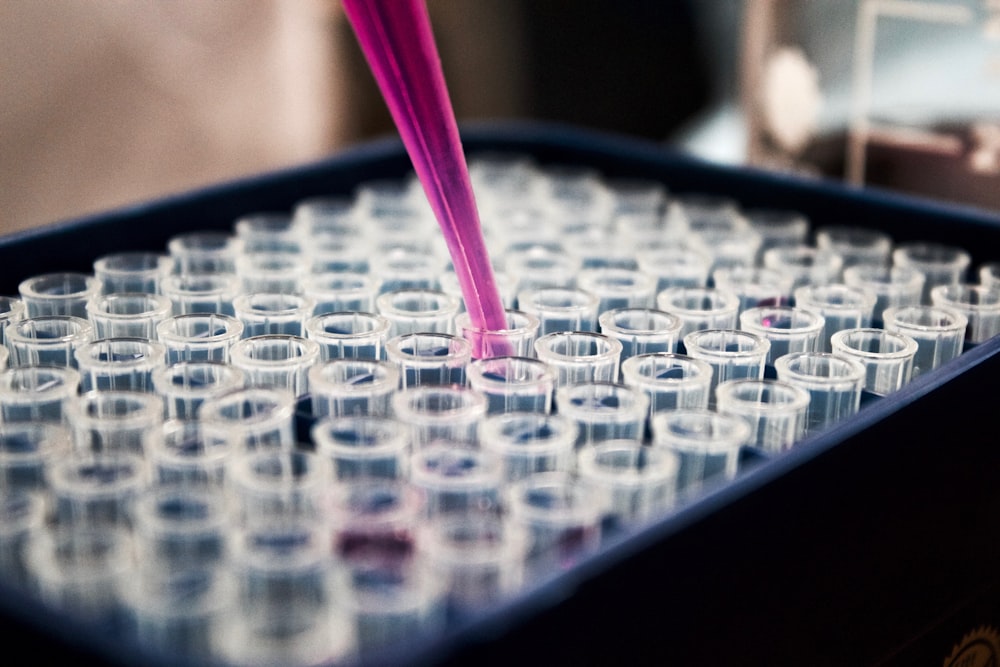Using data analytics to provide businesses with more insights
We’re witnessing a rise in the use of big data for analysis across all industries – from healthcare to commerce – as organizations employ cutting-edge analytics tools and techniques for uncovering new patterns and relationships within their vast quantities of stored information.
Data scientists are tasked with finding ways to extract meaning from these mountains of raw material, seeking out opportunities for innovation or cost savings that would otherwise be invisible without careful examination of this immense volume of organizational data.
As companies continue to collect more and more data, they expect data science to play an increasingly important role in their decision-making process. Whether through developing new products or optimizing processes, the insights provided will allow businesses to succeed in this changing landscape.
This article will explore how data science is changing the way businesses are run. We’ll look at some examples to illustrate how data can provide businesses with more information to make important business decisions that affect the bottom line.
We’ll also explore how MajestEye can help you harness the power of data to give your company a competitive advantage. But first, let’s take a closer look at what big data is and how it works.
What is Big Data?
Big data refers to technologies and practices designed to extract knowledge and insights from immense volumes of structured and unstructured information. The sheer amount of data being generated is growing at unprecedented rates, with some estimating that 2.5 quintillion bytes of data are created every day. In fact, 90% of all the data in the world has been generated within just the last two years, which serves as a testament to how big data really is.
This incredible amount of new information comes from many different sources. Data can be generated by websites visited, products bought, sensors measuring things like precipitation or traffic patterns, social media sites where users discuss their interests – you name it! With so much information being continually created, it’s no wonder that businesses are looking for ways to make use of it.
How does big data work?
Big data works by using a variety of techniques to analyze large volumes of data. This can be done in a number of ways, but the most common approach is to break the data down into smaller chunks that can be more easily processed. The process of breaking the data down into manageable chunks is called “data mining.”
Once the data has been mined, various methods can be used to examine it and find patterns. These patterns can then be used to make decisions or predictions about what may happen in the future. A few of the most common approaches used for data analysis are:
- Statistical analysis: This involves examining data to identify trends and relationships.
- Machine learning: This approach uses algorithms to “learn” how to make predictions based on existing data.
- Text mining: This method can be used to search through large text datasets, such as the entire content of an online news site or all customer reviews for a particular product. It can look for patterns in this data that might not otherwise be apparent to humans.
These insights can help companies make smarter decisions. And the technology to make this possible is more accessible than ever before. Companies of all sizes and in different industries are leveraging big data to help them with decision-making, efficiency, and innovation. Big data has changed the way they run their businesses.
From forecasting demands to enhancing innovation, data science has become an important part of many businesses.
Forecasting demand
For instance, retailers would plan their inventory based on historical sales data in the past. But this approach is no longer feasible in today’s world, where the amount of data available is too vast for humans to process. Instead, retailers are turning to data science and big data to help them forecast future demand.
Data scientists can use a variety of methods to forecast demand, including time-series analysis and machine learning algorithms. They can also use predictive modelling to identify patterns in historical sales data that can be used to predict future demand.
By using big data and data science, retailers can better decide what products to stock and when to stock them. This helps them avoid stock-outs, which can be very costly, and ensures that they are always stocked with the products their customers want.
Enhancing innovation
Data science can also be used to enhance innovation. For example, data scientists can use big data to identify patterns in customer behaviour. They can then use this information to develop new products or services that meet customer needs.
Netflix is a great example of how data science can be used to enhance innovation. Netflix has been using big data for many years to improve its streaming service. In fact, the company’s first big data project was a success: they were able to develop a recommendation algorithm that improved the accuracy of movie recommendations.
Thanks to Machine Learning, Netflix can predict which movies its customers are likely to enjoy based on their movie preferences and viewing habits.
These methods have helped Netflix innovate more than ever before by precisely identifying customer needs. Netflix has become a leader in the streaming video industry because of this.
Machine Learning and Big Data Analytics can power business improvements.
More companies are now turning to big data as a way of gaining business insights and helping them make better decisions. This includes those that operate with enormous datasets, such as organizations in finance, insurance, healthcare, science and technology, retail, and media.
[Related Article: Why is Data Important to your business?]
What’s next?
The future of analytics will see new technologies that allow companies to make better decisions more quickly and with less effort than ever before. Companies such as Amazon, Netflix, and Spotify have used predictive modelling to give customers an experience they expect: personalized products and services tailored just for them, delivered faster than you can say “Alexa, play the latest Taylor Swift song.”
Trends our team at MajestEYE see In the future of data analytics
As our world becomes increasingly digitised, organizations can now draw on vast quantities of information to improve business decision-making. Data science is the key that unlocks the power of big data by enabling businesses to gain insights from their data.
At MajestEYE, we are building on this growing opportunity by combining these technologies with our own proprietary data-enrichment platform to create solutions that provide businesses with the insights they need to make better decisions. Our solutions target different industries at different levels of maturity with the goal of helping them move up the analytics maturity curve.
Here’s how Majesteye Solutions are helping organizations today:
Detecting Financial Fraud:
Financial institutions are able to use our solutions to detect financial fraud and money laundering. Our solutions are also used to identify relationships between customers and entities and track customer activity over time.

-
Dynamic customer segmentation
Data science can help businesses adapt to changing customer needs by using innovative methods like machine learning to create dynamic customer segments. These segments are constantly updated as customer needs and behavioural patterns change, so businesses can act on customer feedback in real-time.
The solutions provided by MajestEYE allow businesses to anticipate customer needs based on robust modelling of their behaviour and preferences. This gives your company a leap ahead of the competition, as you will be able to provide better customer service and products that meet their needs.
Your data-driven insights can help your company grow by telling you what to do next. Our recommendation engine, for example, draws on huge amounts of information to make decisions about what customers want before they know it themselves.
It uses machine learning algorithms to predict customer buying patterns based on the volumes of data available and then recommends complementary or relevant products. These predictions are updated in real-time as the customer’s behaviour changes, ensuring that Next Best Opportunities always reflect their needs.
-
Intelligent fraud detection
“The trade-off between heavy lengthy control processes to prevent fraud and a pleasant customer journey is an obsolete one.”
Businesses can now use data science to detect and prevent fraud while maintaining a positive customer experience. Data analytics can help identify fraudulent behaviour before it causes damage, so businesses can keep their customers happy while protecting their bottom line.
One of the ways businesses can use data science to prevent fraud is by using continuous and automatic modelling of fraud patterns. This involves using machine learning algorithms to detect patterns in fraudulent behaviour so that businesses can take preemptive action to stop it. Machine Learning algorithms can also be used to automatically detect potentially fraudulent transactions based on a minimum number of data.
As businesses become more reliant on data analytics to drive decision-making, the need for a centralized fraud knowledge base becomes increasingly important. This is a repository of information that can be used to help prevent and detect fraud. The fraud knowledge base would include data about past instances of fraud, the methods used to commit fraud, and the profiles of perpetrators.
This type of repository would be invaluable for businesses as it would allow them to make data-driven decisions about how best to prevent and detect fraud. It would also help standardize how businesses approach fraud prevention and detection.
-
Intelligent SME credit limit
There are a number of issues that need to be addressed in order for SME lending to become more attractive. SME lending suffers from high acquisition costs relative to the low volume of loans granted. The high acquisition costs are due to the cumbersome lending process, high rate of rejected applications, and inflexible pricing.
MajetEye’s automatic limit definition and reassessment engine can help to reduce the turnaround time for SME credit. The engine uses machine learning algorithms to define and reassess credit limits for SMEs automatically. This helps to reduce the amount of time it takes to get a loan approved and enrich the criteria for lending decisions.
The engine can also generate rules for credit limit management. These rules can be used to approve or reject loan applications automatically. The rules are generated by using machine learning algorithms to learn how to best assess a customer’s credit risk. This helps businesses to get loans approved more quickly and with less hassle.
-
Predictive SME creditworthiness
Financial Institutions rely on defaults, delays, partial payments, and other incidents to change the credit rating of the SMEs. This is a time-consuming and arduous process that can be improved by using predictive analytics. Predictive analytics can help by using past data to predict the likelihood of an incident occurring. This would allow Financial Institutions to address any changes in a company’s credit rating proactively.
With more firms coming on board, banks are more accountable for their loans, better able to assess the health of their SME loan portfolio, and offer a better service overall. Moreover, by having an up-to-date SME risk knowledge base and 360 views of SMEs, banks will be able to detect any early signs of financial distress.
Big Data in Governments
Big data is set to play a central role in governments worldwide. Governments can use big data analytics to take a more evidence-based approach to policymaking. This helps by providing up-to-date information about how government programs are performing and their impact on the general population.
Governments can use our Big Data, Analytics & Decision solutions to make more informed decisions. The solution collects and analyzes open data from various sources in order to help governments become smarter. It also supports the analysis of large volumes of time-series data with various views on the information. This allows governments to see how they are performing over time and the greatest impact on their constituents.
3 ways Data can help Government:
-
Taxes
-
Services Delivery
-
Better policy Decisions
There are a number of areas where data can help governments make better decisions. Governments can use data to improve how they collect taxes, deliver services, and make policy decisions. Data analytics can also help governments become more transparent and accountable to their citizens.
Governments can use big data to improve the way they collect taxes. The solution uses data analytics to help governments identify tax evasion and fraud. It also helps governments to optimize tax collection by identifying areas where taxes can be increased without causing too much hardship for the citizens.
Governments can also use data analytics to improve the way they deliver services. They can use the solution to detect and prevent cyber threats and attacks. It can help to strengthen security protocols and ensure that citizens’ information remains safe and secure. This results in a safer, more accountable government.
Data analytics can even give governments insights into the best policy decisions for their constituents. This allows them to take a more evidence-based approach to policymaking that provides long-term benefits for their people or business initiatives that could generate revenue or other financial gains. It will also allow them to see how different policies are impacting the community and what impact they have had on people’s lives.
By embracing an approach toward citizen-centric services, government agencies are likely to provide better quality services and become more accountable to their citizens. The use of big data is a critical part of this transformation.
Healthcare data to provide quality care
Data science is also changing the healthcare industry for the better. The use of big data analytics and data-driven decision-making can help to improve the quality of healthcare that patients receive.
DrugEYE™, Data-driven drug discovery
DrugEYE™ is a data-driven drug discovery and development. It provides pharmaceutical and healthcare institutions with precious foreknowledge about any emerging organism (virus, bacteria) immediately after it is detected and based on simple input. DrugEYE™ can be used to help unearth unmet needs in the field of pharmaceuticals by identifying gaps between the current treatment options for patients or their caregivers.
The computer vision, machine learning, and deep learning technologies used in DrugEYE’s proprietary technology generate its output off-laboratory shortening the development time of the drugs while redirecting researchers’ efforts into the correct path.
At present, DrugEYE is aimed at helping companies with early-stage drug discovery by identifying target molecules in their current library against which they might design their new molecule or help in selecting promising targets in drug repositioning projects.
-
Functional characterization of the organism’s genes
The genome of an organism encodes the genetic instructions used in the development and functioning of that organism. The study of an organism’s genome is known as genomics. Genomics has been made possible by advances in DNA sequencing technology.
With the help of data science, biologists can now study the genomes of different organisms to understand how they work. This can help to improve our understanding of disease and to develop new treatments for diseases.
Data science can also be used to study the function of genes. This information can then be used to develop new drugs or therapies for diseases.
-
Prediction of the long term impacts on the human body
The future of data science in business means that we can now predict the long-term impacts on the human body from various drugs. This is possible by using pharmacogenomics, which is the study of how genes affect a person’s response to drugs.
Pharmacogenomics can help to improve drug therapy by predicting an individual’s risk for adverse drug reactions (ADRs) and selecting the most appropriate drug therapy for them. It can also help to identify new targets for drug development and assist in the selection of patients for clinical trials.
One of the ways that pharmacogenomics is used is by looking at a person’s entire genetic makeup. This is known as whole-genome sequencing (WGS). By doing this, it is possible to identify all of the genes that are involved in drug metabolism.
Once all of this information is known, it can be used to develop individualized drug therapy for patients. This means that a patient will receive a drug that is specifically tailored to their own genetic makeup, which will hopefully lead to better outcomes and fewer ADRs.
The future of big data calls for analytics
The future of data science in business is looking very bright. With the continued growth of big data, businesses will be able to gain insights from their data at an ever-increasing rate.
Data science is and will become a requirement in contemporary business. With the increased volume and velocity of information, data scientists are needed to anticipate what might happen next. With faster, more accurate decisions based on aggregated demographic, behavioural, transactional, and other big data from customers, markets, and external sources that are informed by the historical context, leaders can create a strategic advantage for their companies.
In the future, based on a combination of human and machine intelligence, Data will enable businesses to develop new products and services, gain insights from their existing customer base, and anticipate market changes, and customer behaviours.
We have entered a golden era of information technology driven by big data analytics. It is expected that organizations that don’t leverage these technologies will fall behind those that do embrace them. There is a wealth of data that is waiting to be tapped into, and businesses that don’t use data science will be at a disadvantage.
Visionary insights for a successful tomorrow!
At MajestEYE, we are dedicated to helping businesses realize the potential of data science and make the most of these exciting changes. We believe that data science is the key to unlocking a successful tomorrow for businesses of all sizes.
If you would like to learn more about how MajestEYE can help your business, contact us today.








